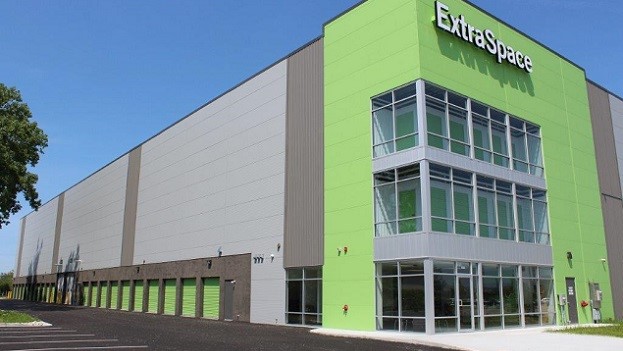 An Extra Space storage facility at 5828 Howard St., Skokie, IL.
An Extra Space storage facility at 5828 Howard St., Skokie, IL.
CHICAGO—Not long ago, revenue growth for the self-storage sector was off the charts. That led to a robust level of acquisitions, especially by the five major public REITs that lead the industry. That growth has leveled off, but strong demand throughout self-storage continues to fuel expansion, as well as attract new private equity into the space. Furthermore, after a relatively quiet period, the public REITs are most likely gearing up for another round of acquisitions in the near future.
Chicago-based MJ Partners, a self-storage firm, just published its latest analysis of the sector, and found that in the second quarter the REITs, including Public Storage and Extra Space Storage, generated same-store revenue growth ranging from 1.5% to 4.1%. Although these numbers once ranged from around seven to nearly ten percent, experts say the present rates are satisfying.
“There is still strong revenue and NOI growth, and their occupancy levels are all in the low 90s,” Marc Boorstein, a principal with MJ Partners, tells GlobeSt.com. What makes this so impressive is that most REITs report that 2018 and 2019 may be the peak years for deliveries during this development cycle.
Jernigan Capital, based on estimates from Yardi Matrix and the US Census Bureau, estimates 400 to 460 new deliveries in the top 50 markets in 2018, compared to 352 deliveries in 2017. Of the public REITs, only Public Storage, by far the nation's largest, has a really active development pipeline, Boorstein says, but an “ability to build at an 8% to 9% yield and sell in a mid-5% stabilized cap rate market remains attractive to merchant builders.”
“The new supply is a concern, but it hasn't had an impact yet,” he adds, and private equity is still placing big bets on self-storage.
Heitman, for example, took a 75% interest in a new joint venture with National Storage Affiliates that acquired 112 properties across 17 states and Puerto Rico for $1.325 billion from Simply Self Storage. The partners expect the transaction, which includes 8.7 million rentable square feet in 68,000 units, to close in the third quarter.
And unlike many of the private investors surging into the sector, Heitman is a longtime player. “They've been around multiple cycles in self-storage,” Boorstein says, and a purchase of this magnitude sends a signal that the industry's prospects are solid.
And although the public REITs have slowed their own acquisitions, Boorstein says that is probably temporary. Public Storage recently followed the lead of Extra Space Storage and CubeSmart by launching a third-party management platform, a move that will give it the inside track on acquiring the properties it manages. During the second quarter, it added 48 new third-party management contracts. Combined with the 26 legacy assets, the company now manages 74 assets for various third-party owners.
Extra Space added 42 properties to its third-party management platform during the second quarter, and now manages 700, including several hundred it runs as part of a joint venture. And CubeSmart increased its third-party management program to a total of 535 stores.
“They are trying to get as many as they can to build a pipeline for acquisitions,” Boorstein says.
Want to continue reading?
Become a Free ALM Digital Reader.
Once you are an ALM Digital Member, you’ll receive:
- Breaking commercial real estate news and analysis, on-site and via our newsletters and custom alerts
- Educational webcasts, white papers, and ebooks from industry thought leaders
- Critical coverage of the property casualty insurance and financial advisory markets on our other ALM sites, PropertyCasualty360 and ThinkAdvisor
Already have an account? Sign In Now
*May exclude premium content© 2025 ALM Global, LLC, All Rights Reserved. Request academic re-use from www.copyright.com. All other uses, submit a request to [email protected]. For more information visit Asset & Logo Licensing.








